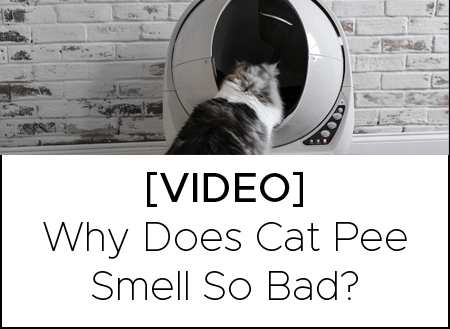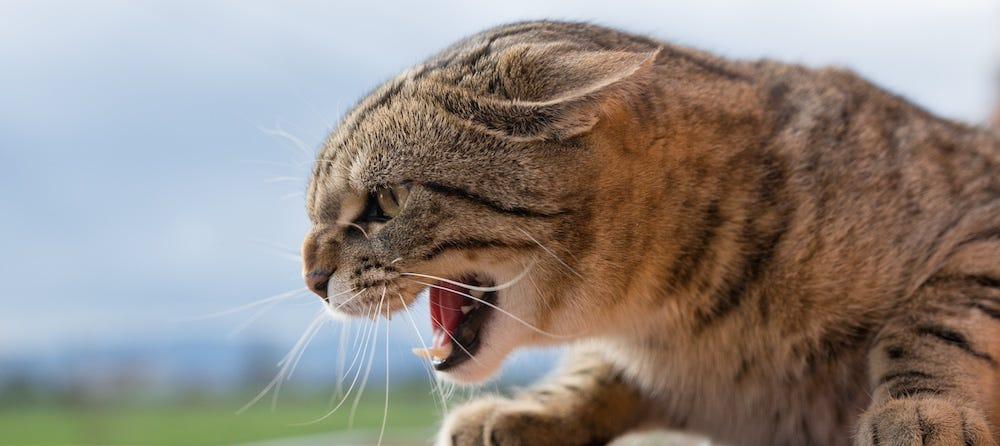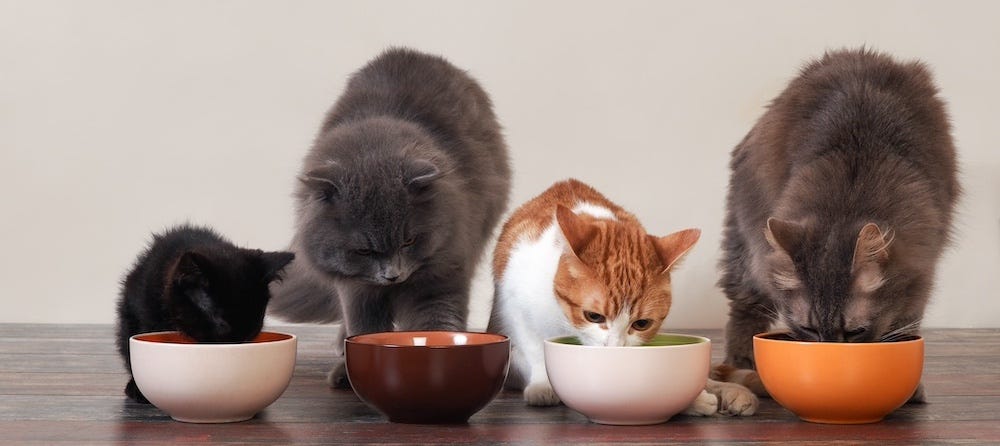Years ago, I woke up to find my beloved cat, Echo, partially paralyzed with an abnormal tilt to his head. Instantly, I was worried that he had a “stroke.” Now, as a veterinarian, I knew it was likely an ischemic hypertensive incidence secondary to cardiac disease. In other words, Echo likely had a neurologic complication from severe hypertension due to a heart problem. That’s what we’ll be discussing today: hypertension in cats.
Cats rarely get primary hypertension, or high blood pressure for no known medical condition—this is more common in humans. Instead, certain diseases such as chronic kidney problems, hyperthyroidism, diabetes mellitus, and heart disease are common causes of secondary hypertension in cats.
Echo’s tale
Echo was pretty young when he had his “stroke”—only about 5 years old! But, Echo earned his name when I diagnosed him with a very loud heart murmur; I was examining him after he had just been surrendered to the local shelter. He had an echocardiogram (e.g., ultrasound of his heart) performed and was diagnosed with a congenital heart defect. In other words, he was born with a severe heart defect that prevented blood from flowing through his lungs and heart normally. Hence, I decided to adopt him on the spot and name him “Echo.” Ultimately, I knew that he’d have a significantly shortened lifespan because of his bad heart disease, but I wanted to be able to give him the best home possible in the few short years he had.
During Echo’s stroke episode, I rushed him to the veterinary clinic, where he was diagnosed with life-threatening hypertension secondary to his heart disease. His systolic blood pressure was 220 mm Hg! I had to medicate him for the rest of his life with blood pressure medications to help him live longer.
What is hypertension? What’s a normal blood pressure in cats?
Hypertension, which is high blood pressure, is relatively common in cats—especially in geriatric cats over 10-15 years of age. Hypertension can be quite serious, and result in severe neurologic, eye, kidney, and heart-related complications when untreated. Most people are surprised to know that a cat’s blood pressure is similar to a human’s blood pressure: typically 120/80 mm Hg. But this is at home, when your cat isn’t stressed. After being placed in a cat carrier, going for a car ride, and smelling dogs at the veterinary clinic, your cat’s blood pressure is likely closer to 160 mm Hg (still normal for an excited or aroused cat!). The definition of hypertension is typically > 160 mm Hg in a cat, but I typically start treatment for it when your cat’s blood pressure is consistently > 180-190 mm Hg.
So, why should we care about hypertension in cats? It’s because high blood pressure can cause organ damage to your cat. Clinical signs of hypertension in cats are hard to detect until it’s really severe.
Signs of hypertension in cats include:
- Acute blindness (e.g., bumping into things)
- Dilated, unresponsive pupils
- A “whiteness” to the inside of your cat’s eye (from a retinal detachment)
- Having abnormal pupil sizes between the two eyes
- Fainting episodes (called syncope)
- Acute neurologic episodes (e.g., a stroke-like episode)
- Falling over
- Walking “drunk” or wobbly
- Acutely seizuring
- Having an acute head tilt
- Bloody noses (rare)
- Acute death (rare)
Other important signs to monitor your cat for include:
- Weight loss
- Increased thirst
- Larger clumps of urine in the litter box
- Increased urination
- Increased trips to the litter box
- Hyperactivity or lethargy
- Change in appetite
- Malodorous breath
- Exercise intolerance
- Increased respiratory rate
- Open mouth breathing
While these latter signs aren’t direct signs of hypertension, they are signs of underlying medical problems that cause hypertension. As I said earlier, cats rarely get primary hypertension—high blood pressure for no known medical condition. This is more common in humans. Diseases such as chronic kidney problems, hyperthyroidism (e.g., an overactive thyroid), diabetes mellitus, and heart problems are common causes of secondary hypertension in cats. In a veterinary study, 60% of cats with chronic kidney disease had hypertension, while 87% of hyperthyroid cats had hypertension. That’s why it’s so important that your veterinarian measures your cat’s blood pressure!
How does my veterinarian diagnose hypertension in my cat?
We measure blood pressure in cats using something called a Doppler blood pressure machine. (There are several ways of measuring blood pressure in animals, but Doppler is one of the most accurate, so I personally prefer this method/machine).
Now, I’m a big believer that you should only go to a veterinarian if they have even a few basic monitoring devices in their clinic—and one of them is a blood pressure machine! If they don’t even have this at their clinic, run!
Any pet over 10 years of age should have an annual blood pressure performed. Just like how you get a blood pressure every time you go to a human doctor’s appointment, so should your cat! That’s because the sooner we veterinarians diagnose your cat with hypertension, the sooner we can investigate the causes for it and treat it. Measuring blood pressure on cats can be a little tricky, as they need to have a cuff placed on their limb. This cuff will slowly inflate and deflate to measure a blood pressure. But this procedure can potentially save your cat’s life!
Your veterinarian will also want to obtain a thorough history, do a thorough physical examination (to feel the thyroid gland on the neck area, palpate the kidneys for symmetry and size, etc.), and look into your cat’s eyes (or back of their eyes) if needed too. Blood work to look at the kidney and liver function, white and red blood cells, a urine test (e.g., to look for protein in the urine, ability to concentrate, etc.), a thyroid test, X-rays, and even an ultrasound of the heart (or abdomen) are also warranted.
What is the treatment for cats diagnosed with hypertension?
If your cat was just diagnosed with hypertension, fear not. It’s treatable. That said, we have to find out what’s causing the hypertension and treat the underlying disease. Treatment for the hypertension itself may include blood pressure medications like calcium channel blockers (e.g., amlodipine), ACE-inhibitors (e.g., enalapril or benazepril), or even diuretics, depending on what the underlying cause is. These medications work by relaxing and dilating your cat’s blood vessels. With severe cases of hypertension, even intravenous drugs to lower the blood pressure may be necessary. (This typically is only done at the veterinary emergency clinic or at veterinary specialty clinics.) Ultimately, lifelong medication and treatment of underlying medical problems—like hyperthyroidism and kidney disease—must be addressed for best long-term outcome.
What’s the prognosis for hypertension in cats?
Thankfully, the prognosis for hypertension in cats is excellent to fair, depending on what the diagnosis is and what the response to treatment is. Hypertension in cats is controllable—and potentially even reversible with medication, as long as the underlying medical problem is also treated. When in doubt, consult with your veterinarian or even make an appointment with an internal medicine specialist or cardiologist to help adjust your cat’s blood pressure medications and treat those underlying conditions like hyperthyroidism, kidney disease, and diabetes.
Preventing hypertension in cats
The best way to prevent severe complications of hypertension is to make sure your cat is getting an annual exam—especially if they are over the age of 7-10 years old. Because that’s when we’ll start to see all those medical problems that can cause severe hypertension. If your cat is diagnosed with one of these medical problems, they’ll need blood work typically 2-3X/year, at which point a blood pressure should ALWAYS be done to be safe.
Remember, we want to catch your cat’s medical problems earlier than later, before systemic changes to the body and secondary eye problems—that way we can fix it and treat it without any long-term secondary effects.
Cover photo by Pacto Visual on Unsplash









